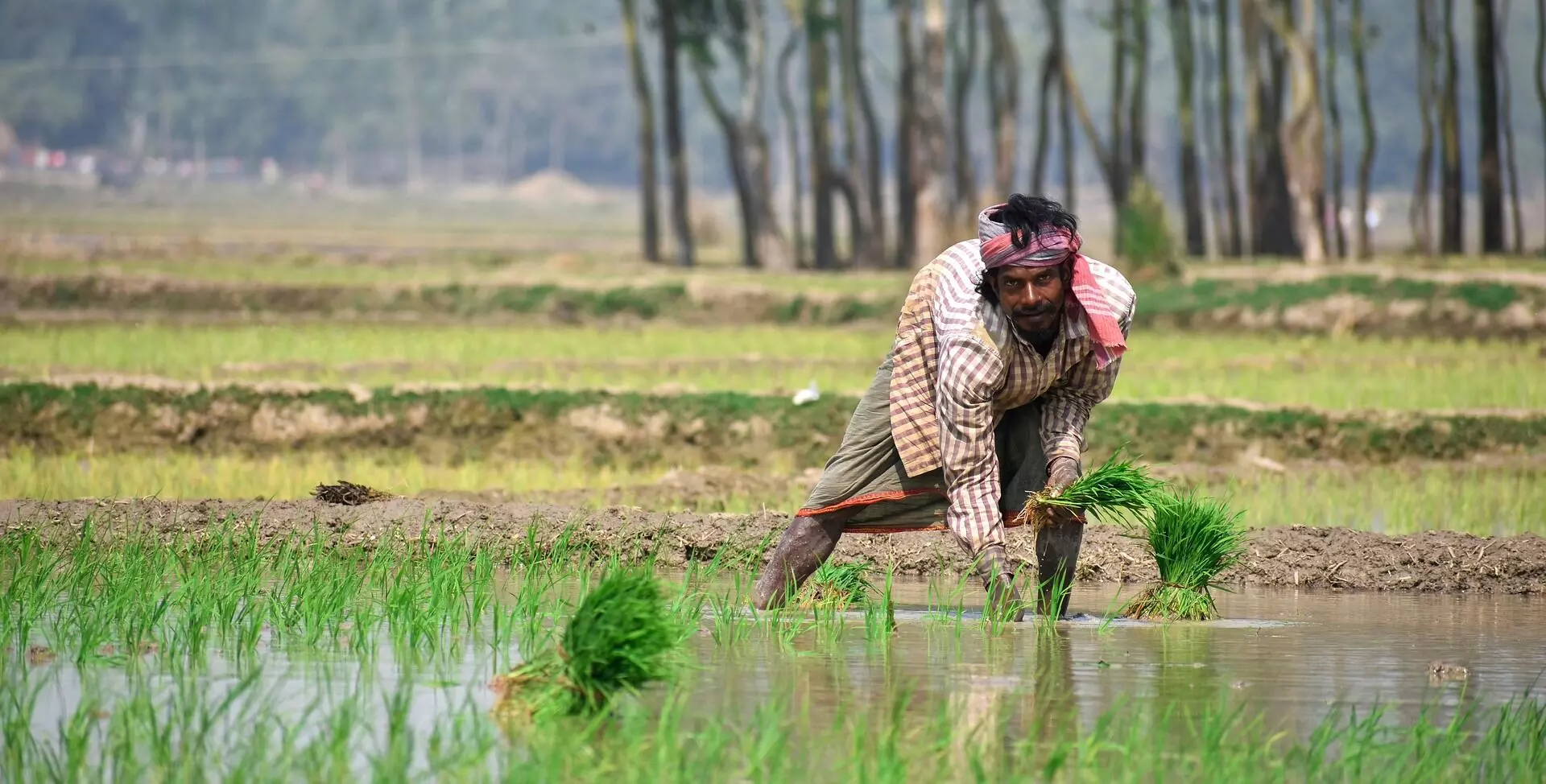Time for transition
The governments of Punjab and Haryana should incentivise DSR cultivation by allaying farmers’ concerns around productivity and risk involved in adopting the new technology

The Union Ministry of Water Resources estimates that unless remedial measures are taken, acute scarcity of groundwater may grip many parts of Punjab and Haryana, where several blocks may completely run out of groundwater not just for irrigation, but even for drinking purposes over the next 15 to 20 years. The Green Revolution, which ensured India's food security during the last five decades, led to the overexploitation of groundwater in these states through the installation of millions of tube wells since 1966. Worst of all, the water-intensive agronomic practices of transplanted rice were introduced to these semi-arid states as part of the packages of IRRI-dwarf high-yielding varieties of paddy, which have become the primary reason for groundwater depletion (the main source for drinking and irrigation).
Groundwater overexploitation has grown significantly due to the fast population growth, intensive agricultural activities, and agriculture-based industries. One of the most agriculturally developed areas in the country, the Punjab-Haryana plain, has experienced groundwater depletion in several administrative blocks. In Punjab, 78.9 per cent of the blocks have been classified as 'overexploited.' In 18 of the 22 districts in Punjab, the water table dropped by more than a meter every year between 1998 and 2018. According to a report, Punjab had 192,000 tube wells in 1970-1971, which had increased to 1.38 million by 2011-2012. The area irrigated by canal has shrunk from 58.4 per cent to 28 per cent over the last 60 years, while the area irrigated by tube wells has increased from 41.1 per cent to 71.3 per cent. According to government data in Punjab, currently, the water table is falling at a rate of 86 cm per year, leading to a precarious situation where no underground water will be available across the state in the coming 15-20 years.
According to the first-ever village-level survey by the Haryana Water Resources Authority (HWRA), 1,780 out of 6,885 villages in the state were severely groundwater-stressed, with groundwater dropping to 30 meters, and in another 1,903 villages, the groundwater level was found at a depth ranging from 10-20 meters. Groundwater quantity, as well as quality, is alarmingly deteriorating, leading to indebtedness for farmers and cases of farmer suicides, and a prophecy of shifting paddy cultivation to the eastern states of India.
As per the HWRA, Haryana is facing a deficiency of about 14 lakh crore litres of water annually (14BCM). There is an urgent need to manage and utilise the accessible water logically and sensibly. With the groundwater crisis looming large in the country's key grain-producing states of Punjab and Haryana, both governments are pushing farmers to move away from water-guzzling practices of transplanted rice and instead adopt direct seeding of rice (DSR) technology. In a bid to motivate farmers to adopt DSR, the Punjab government has announced an incentive of Rs 1,500 per acre to the farmers for sowing paddy through this innovative technology. In the neighbouring state of Haryana, the government has introduced a cash incentive of Rs 4,000 per acre to the farmers.
DSR for groundwater conservation
Generally, since the era of the Green Revolution, farmers in Punjab and Haryana have been sowing paddy by flooding (puddling) their fields with water. However, over the years, this practice has resulted in a depletion of groundwater levels. Punjab’s average groundwater level has dropped to 170 feet, and the situation in Haryana is similar. In Direct Seeded Rice (DSR), there is no need to flood the field for paddy seeding. Instead, they are sown just like other cereals, pulses, and oilseed crops in a VATTAR field prepared after pre-sown irrigation. After sowing, the field needs water only after 21 days compared to transplanted rice, where the fields need to be flooded before cultivation, resulting in high water consumption. On average, the irrigation water requirement for puddle-transplanted rice is 140 cm, while in the DSR technique, it is only 100 cm, resulting in a water-saving of about 30 per cent. Hon'ble Chief Minister of Haryana informed in a press conference on April 1, 2023, that "During the Kharif-2022 season, rice was successfully cultivated on 72,000 acres through DSR technology, saving 31,500 crore litres of water," which means that "if the total area under paddy, 33 lakh acres, shifted to DSR, it would compensate for the total projected deficit demand of 14BCM water of Haryana annually."
The DSR technique, which needs far less water for irrigation, improves percolation, reduces dependence on farm labour, and improves soil health — enhancing the yield of both paddy and wheat by 5-10 per cent. It also reduces methane emissions with low carbon footprints. To draw attention to this novel technique, PAU’s Vice Chancellor SS Gosal, while addressing the IRRI-BMGF-PAU-ICAR meet on March 3, announced that "TAR-VATTAR DSR technique is one of the most suitable forms of DSR for Punjab and will enable farmers to maintain their yields and contribute to environmental sustainability". The impact of DSR technology can be significant since rice-wheat is the major cropping pattern practiced on over 15 million ha of land in the Indo-Gangetic plains.
Although farmers are upbeat about the new technique of TAR-VATTAR DSR for saving costs, labour, energy, and groundwater in paddy cultivation, they are apprehensive about its productivity, risks involved in shifting to new technology, and a lower number of incentives offered by the state government. Therefore, to conserve groundwater for future generations, the Punjab-Haryana government should incentivise the eco-friendly practice of ‘direct seeded rice’ cultivation over water-intensive ‘transplanted rice’. To change the farmers' mindset for its large-scale adoption, the state government should announce a financial assistance of Rs 10,000 per acre, which will also be recovered within the same crop season by huge savings of energy (electricity and diesel, etc.).
The writer is former Principal Scientist, ICAR-IARI, New Delhi. Views expressed are personal



